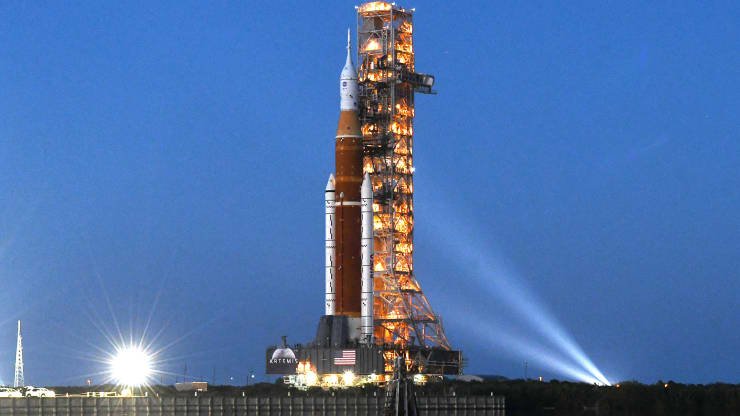7:15 AM | *Artemis I rocket launch scrubbed on Monday…next attempt for launch of the most powerful rocket ever built is Saturday, September 3rd…paves the way for a return to the moon*
Paul Dorian
NASA’s SLS moon mega rocket topped by the Orion spacecraft rolls out of the Vehicle Assembly Building at the Kennedy Space Center on its way to launch complex 39B for a launch rehearsal on March 17, 2022 in Cape Canaveral, Florida.
Credit: Paul Hennessy | Anadolu Agency | Getty Images
Overview
The launch of Artemis I – the most powerful rocket ever built – was scrubbed on Monday at the Kennedy Space Center in Florida due to engine issues. The next window of opportunity for the launch of Artemis I will come on Saturday afternoon, September 3rd, but the weather may be an issue. This mission will pave the way for a return to the moon with the next rocket, Artemis II, carrying astronauts to orbit the Moon in 2024 and then Artemis III to touch down on the lunar surface with astronauts in 2025 or perhaps 2026.
Credit: NASA, “spaceweather.com”
Discussion
Artemis I was due to launch on Monday from Kennedy Space Flight Center’s pad 39B in Florida, but it was scrubbed due to engine issues including a liquid hydrogen leak. Artemis I and the Orion capsule will not carry astronauts nor will it land on the Moon, but rather this is a Moon-orbiting mission that represents the beginning of NASA’s Artemis program named after the twin sister of Apollo in Greek mythology, the daughter of Zeus and Leto. The next window of opportunity for launch of this most powerful rocket ever assembled will come on Saturday, September 3rd at 2:17PM in a mission that will not carry any astronauts. A word of warning…the weather could turn out to be an issue on Saturday for the next attempt at a launch. This is a test flight that will pave the way for the Artemis II rocket launch in 2024. That next rocket, Artemis II, will indeed carry astronauts to orbit the moon giving NASA a couple of years to fix any problems uncovered by Artemis I. Artemis III will then touch down near the Moon’s south pole in 2025 or perhaps 2026 with astronauts that will include the first woman to ever walk on the lunar surface.
Credit: NASA, “spaceweather.com”
Artemis I is a 32-story rocket and produces up to 8.8 million pounds of thrust – 15% more than the Saturn V rockets of last century. Fully fueled, the Space Launch System (SLS) rocket weighs 5.7 million pounds and will exit Earth’s atmosphere in only 2 minutes. For Artemis I, there will be three mannequins inside the Orion capsule to collect data via sensors about what astronauts will experience on the trip to-and-from the moon. Over the course of the 42-day mission, Orion will orbit the Moon for more than a week. This capsule will come within 62 miles of the lunar surface and travel 40,000 miles beyond the far side of the Moon before turning back to Earth.
The capsule will stay in space longer than any human spacecraft has without docking to a space station and it’ll return home faster and hotter than ever before. Indeed, one of the key goals of the mission is to test Orion’s heat shield when it slams into Earth’s atmosphere at 25,000 mph and a temperature of up to 5,000 degrees (F).
(Credit to NASA, “spaceweather.com” for some of the information in this posting).
Meteorologist Paul Dorian
Arcfield
arcfieldweather.com
Follow us on Facebook, Twitter, YouTube



